



Item |
Resident |
Nonresident |
365-day hunting license |
$40 |
$120 |
365-day hunt/fish combination license |
$44 |
$150 |
365-day hunting license (youth 13 under) |
$11 |
$34 |
365-day hunting license (youth 14 to 17) |
$16 |
$34 |
365-day hunt/fish combination license (youth 14 to 17) |
$20 |
$38 |
Application fee per species |
$10 |
$16 |
Limited entry elk |
$314 |
$1,050 |
Multi-season limited entry elk |
$564 |
$1,855 |
General spike or any bull elk permit |
$56 |
$613 |
General multi-season spike bull elk |
$200 |
$830 |
Youth general season elk |
$50 |
$613 |
Limited entry antelope |
$63 |
$371 |
Item | Resident | Nonresident |
365-day hunting license | $40 | $120 |
365-day hunt/fish combination license | $44 | $150 |
365-day hunting license (youth 13 under) | $11 | $34 |
365-day hunting license (youth 14 to 17) | $16 | $34 |
365-day hunt/fish combination license (youth 14 to 17) | $20 | $38 |
Application fee per species | $10 | $16 |
Limited entry elk | $314 | $1,050 |
Multi-season limited entry elk | $564 | $1,855 |
General spike or any bull elk permit | $56 | $613 |
General multi-season spike bull elk | $200 | $830 |
Youth general season elk | $50 | $613 |
Limited entry antelope | $63 | $371 |
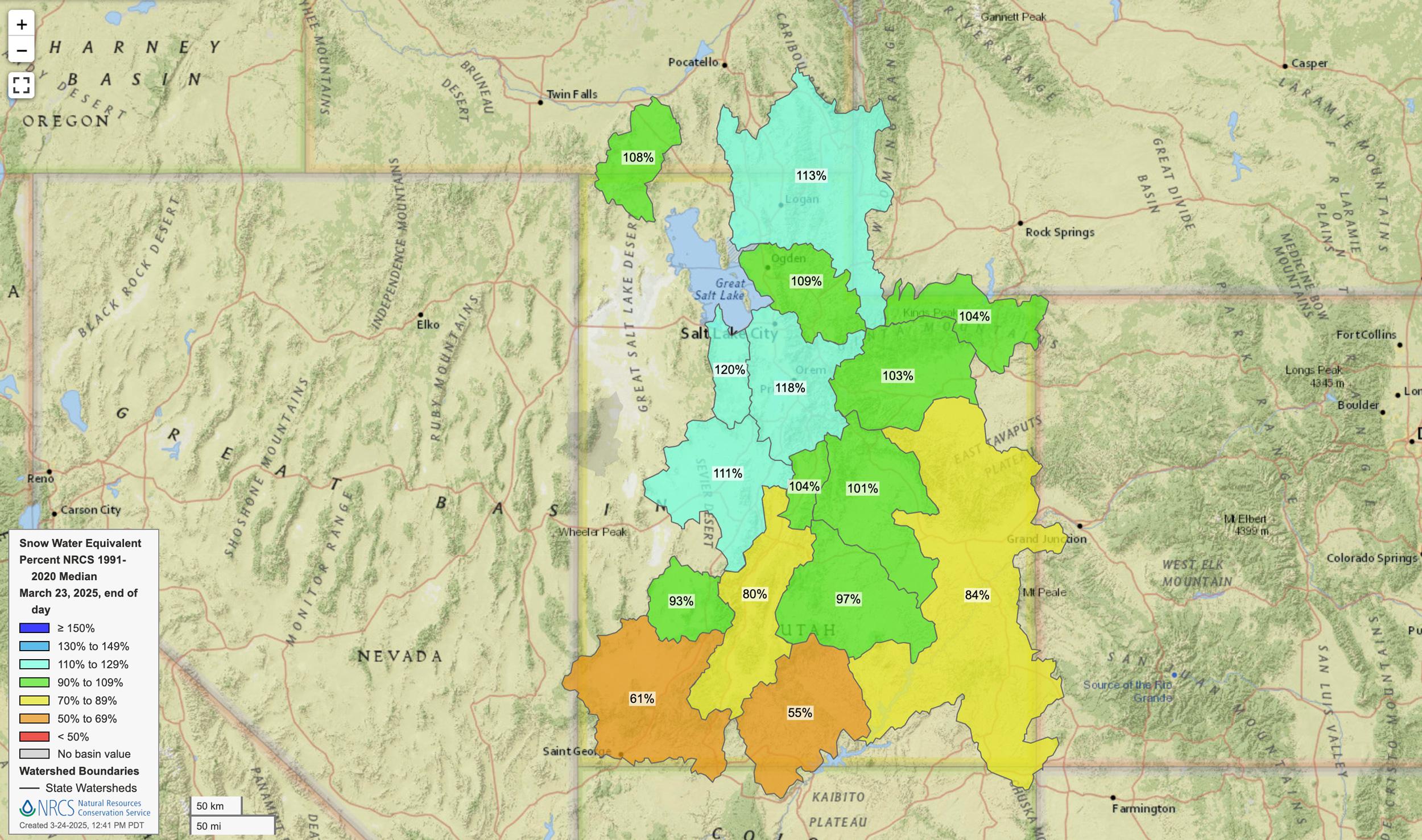
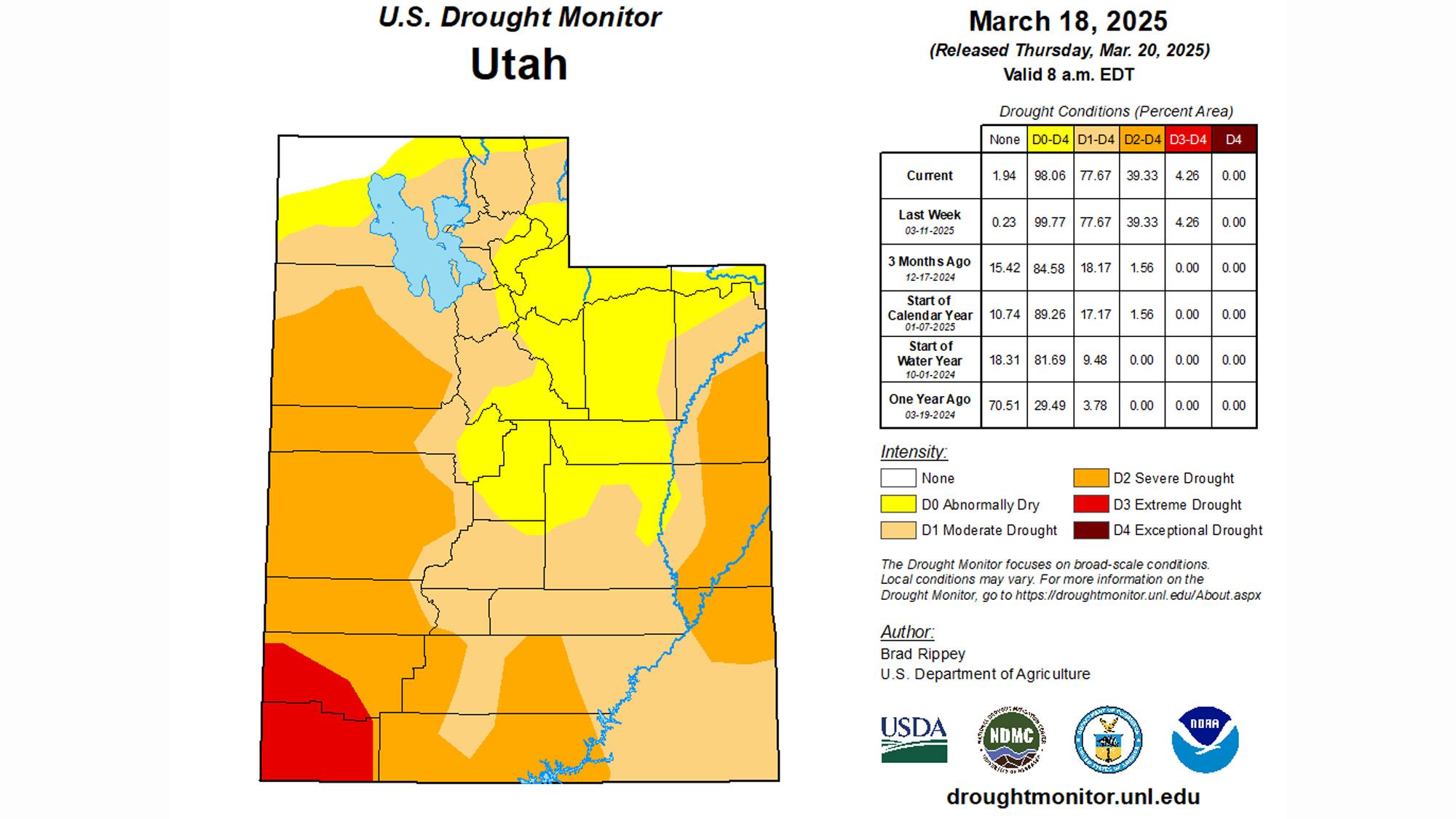
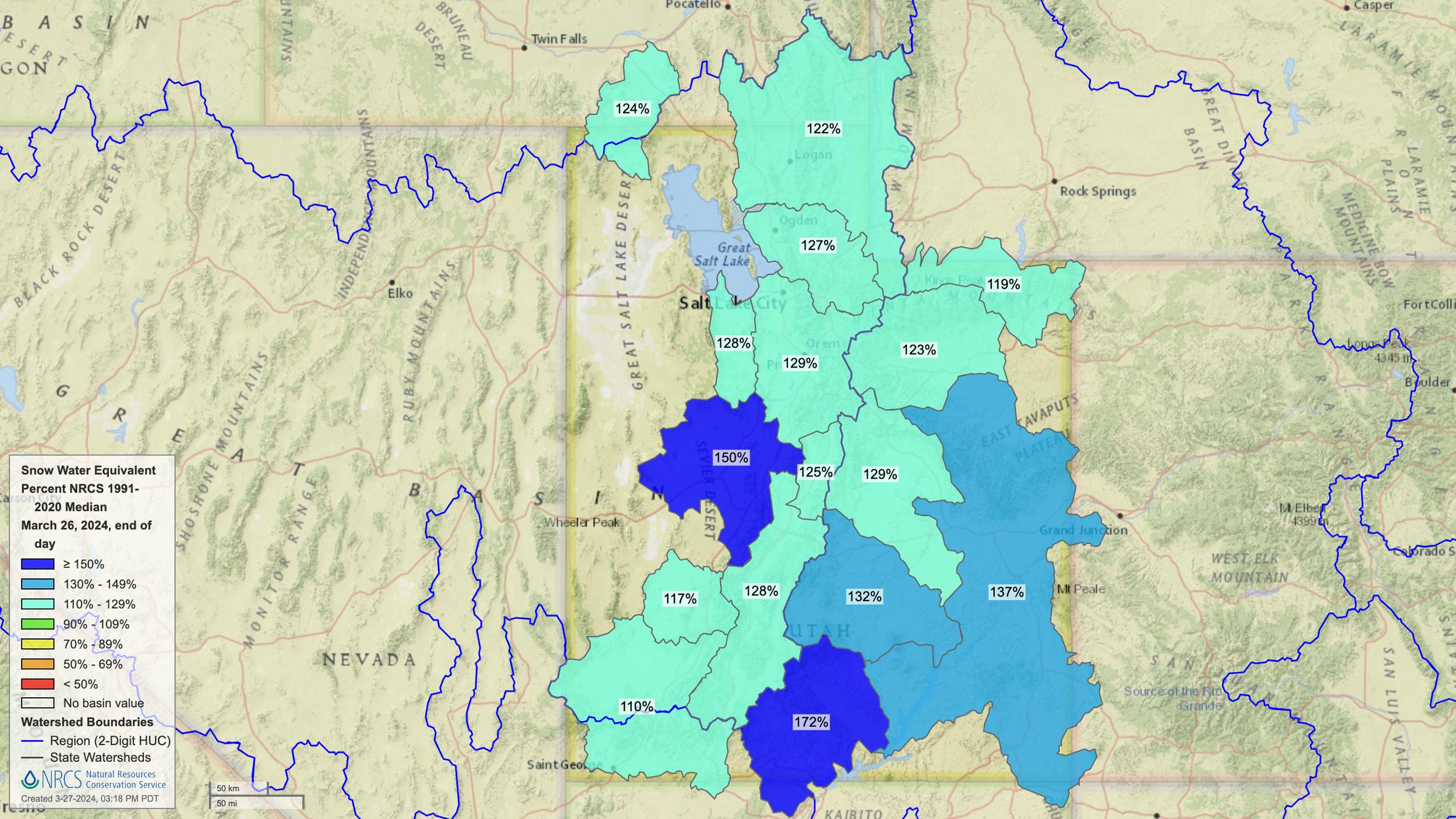
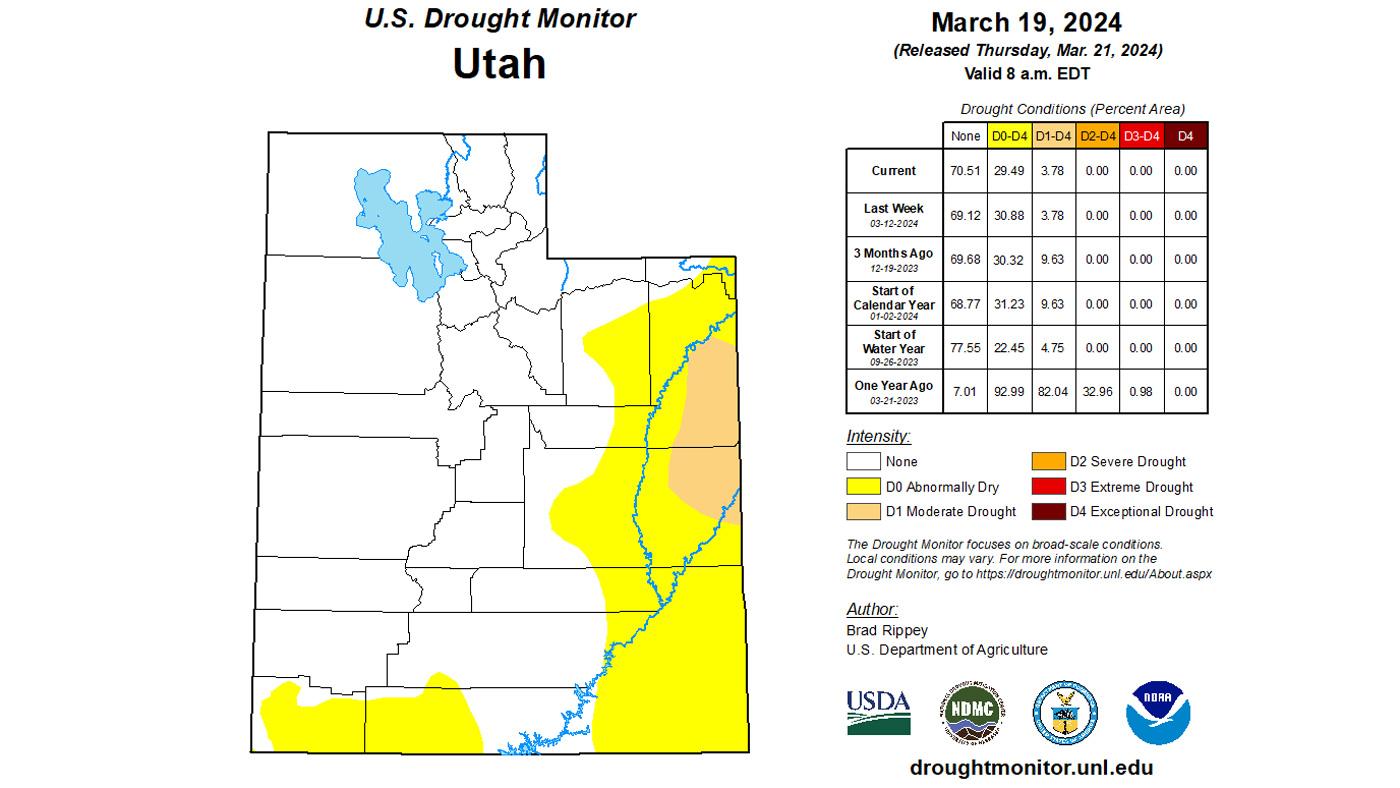
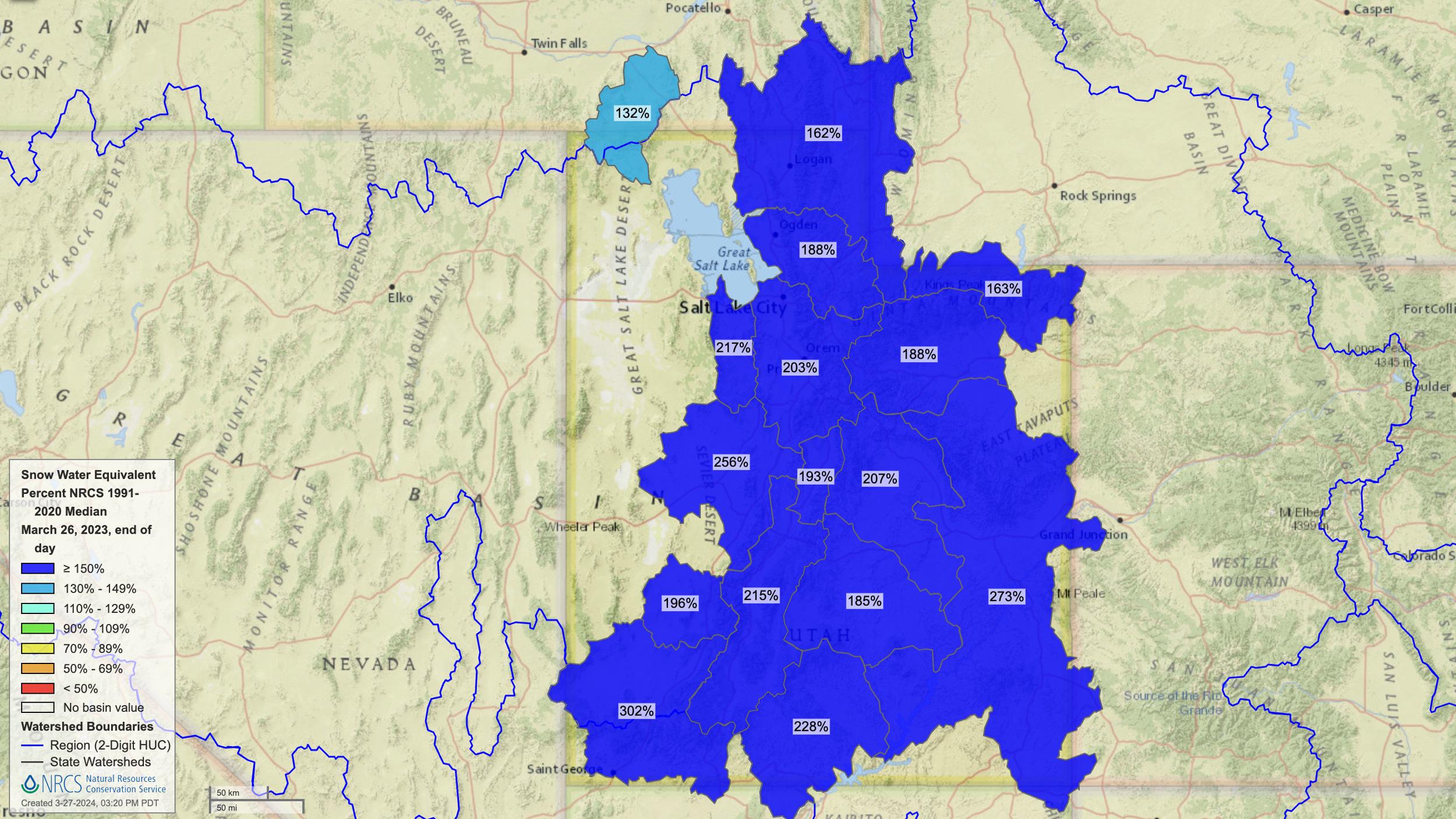
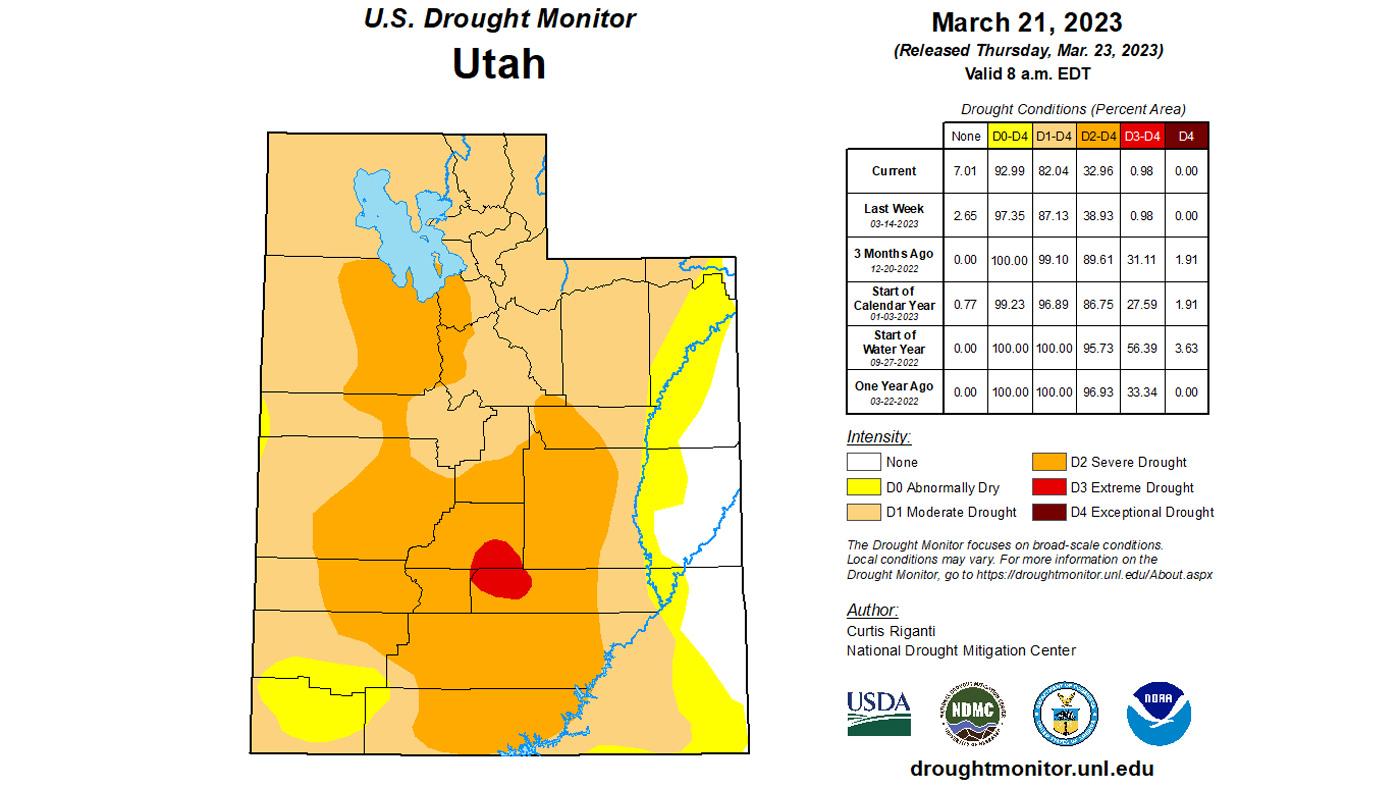
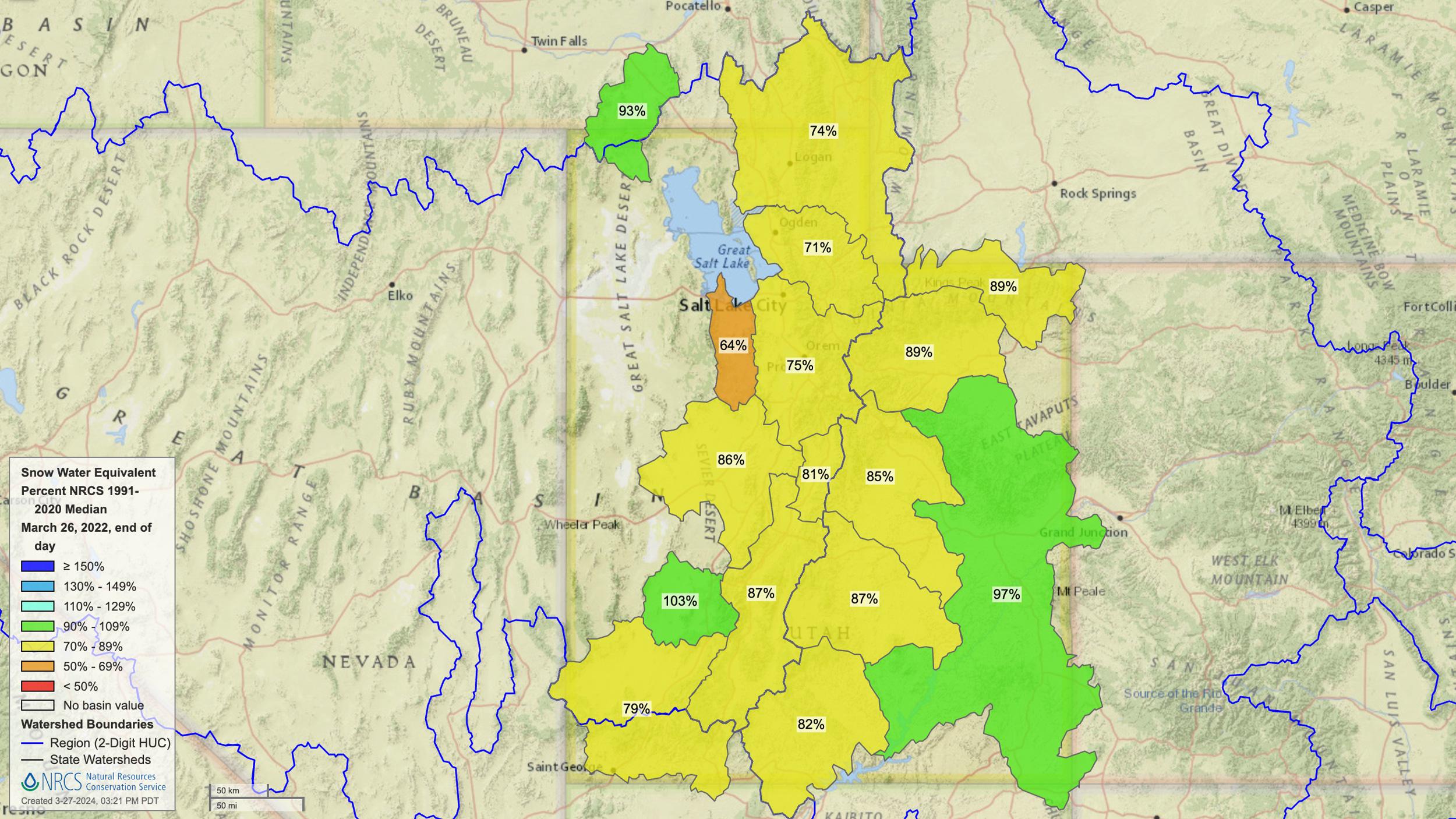
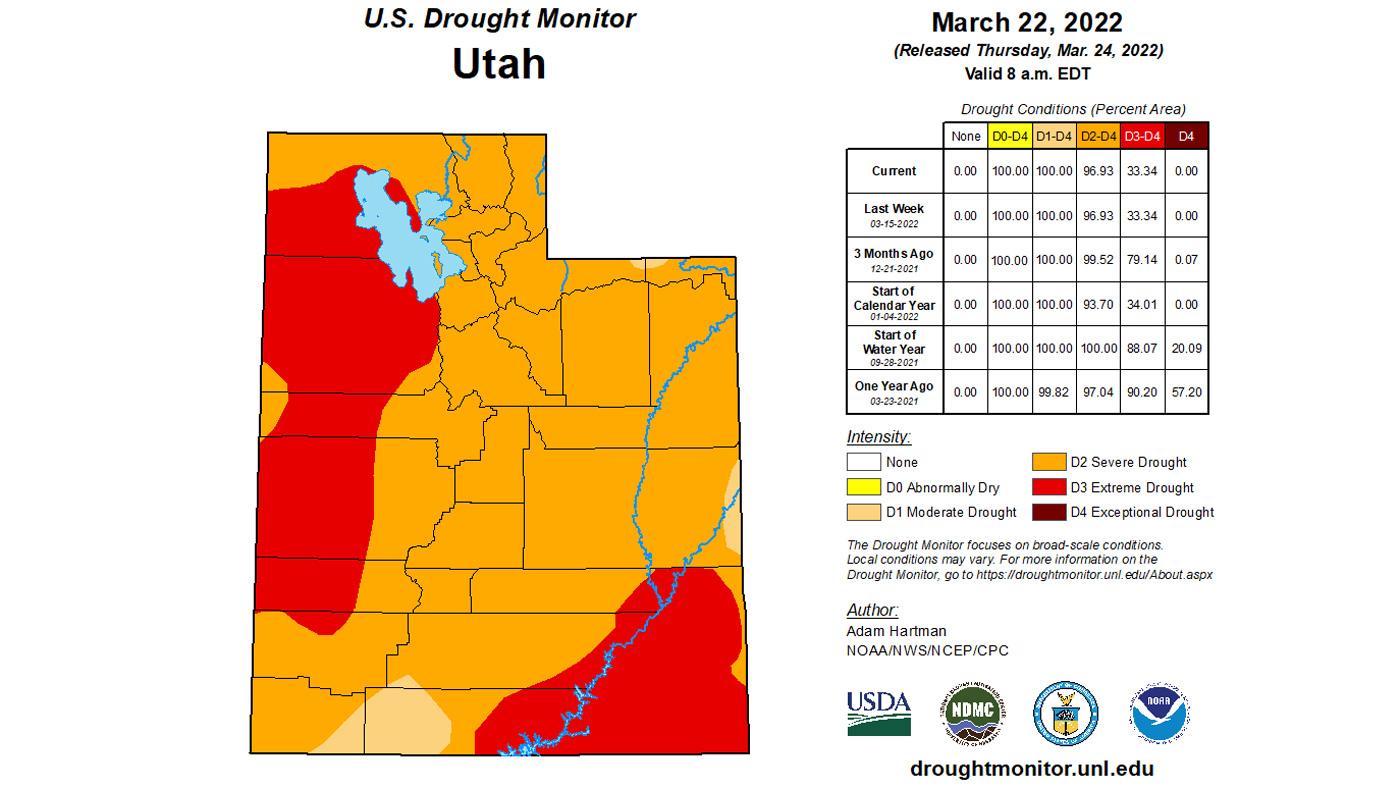
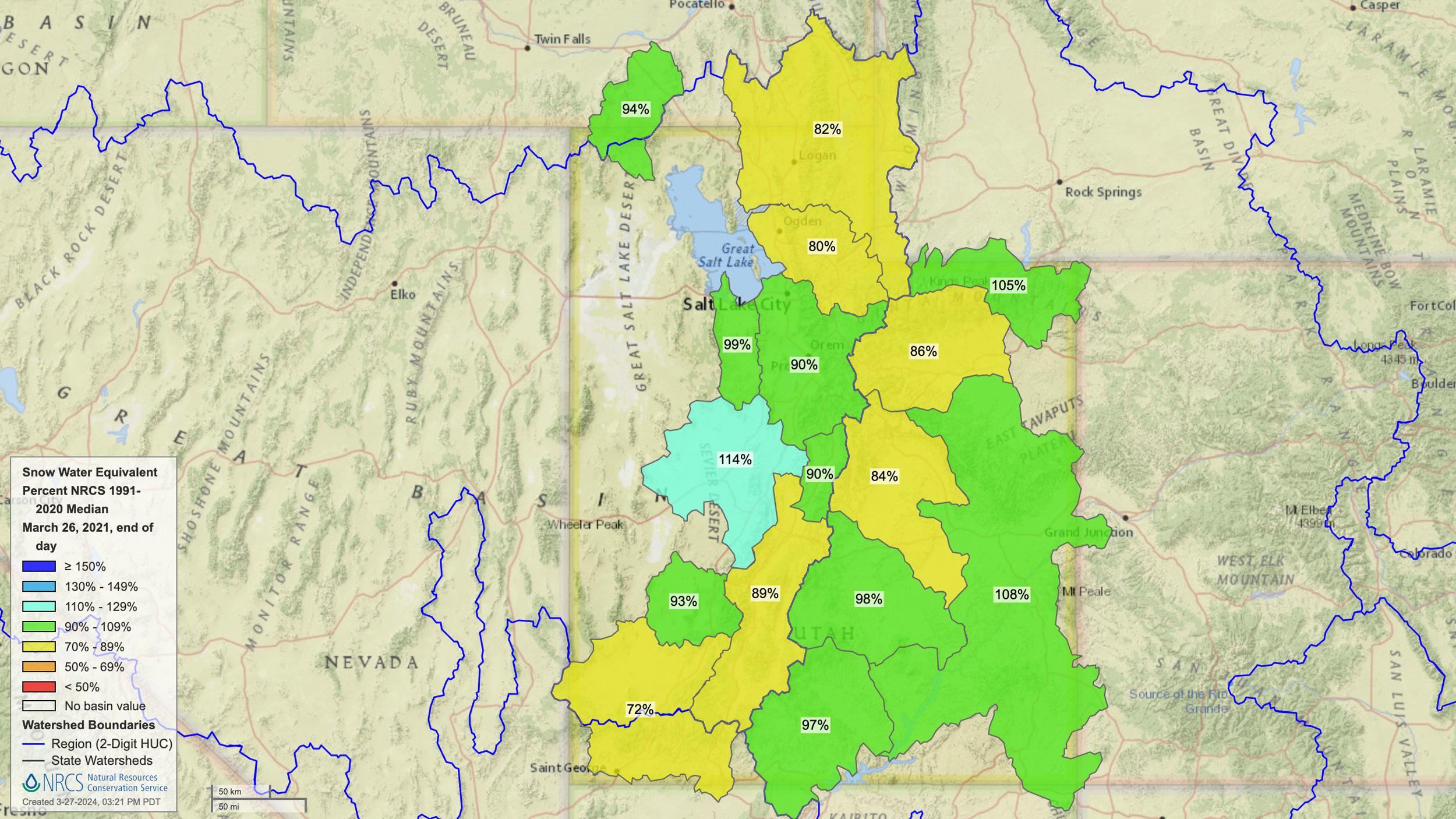
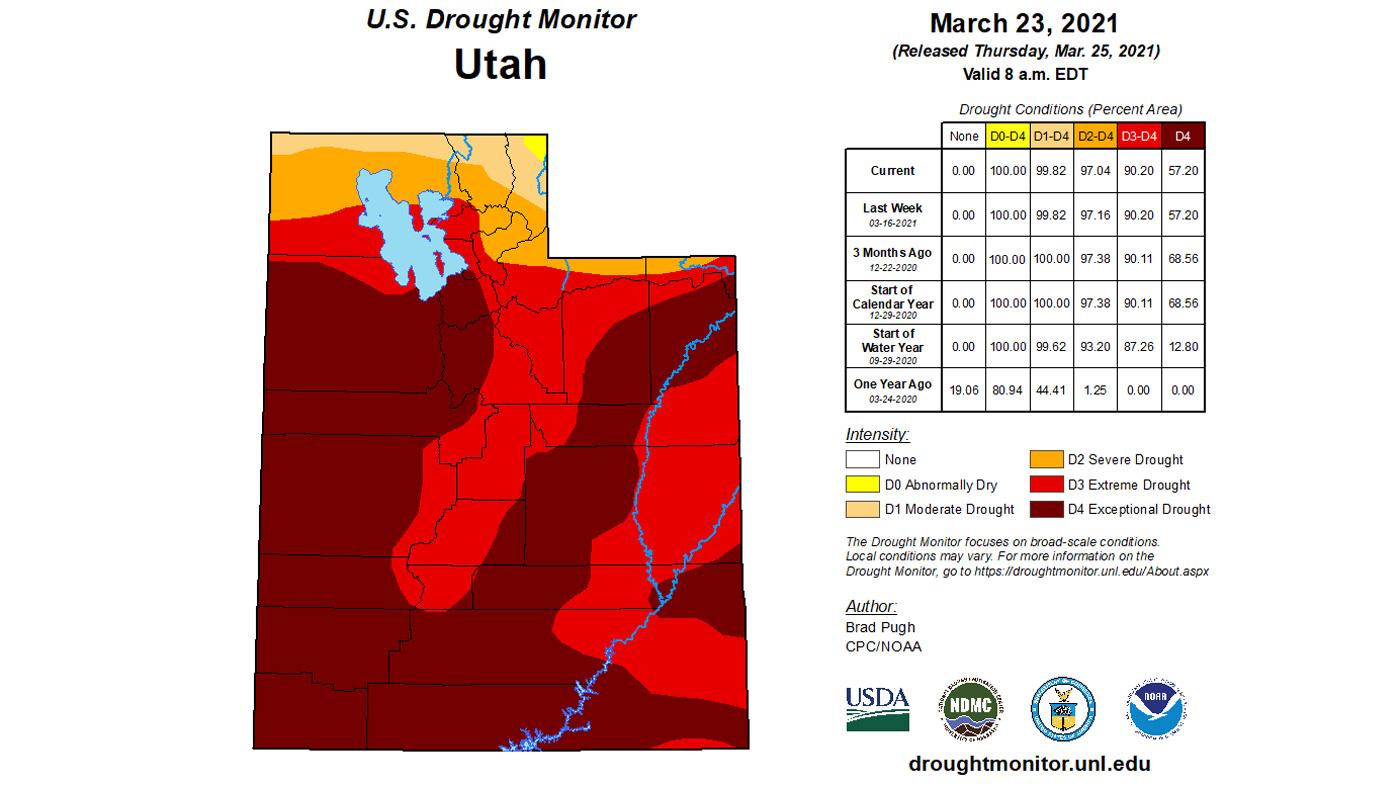
Unit |
2021 average age |
2022 average age |
2023 average age |
3 year average age |
Beaver, East |
8.4 |
8.6 |
9.1 |
8.7 |
Plateau, Boulder |
7.8 |
8.4 |
8.4 |
8.2 |
Fillmore, Pahvant |
7.5 |
8.7 |
7.7 |
8.0 |
San Juan |
7.7 |
8.3 |
7.6 |
7.9 |
Book Cliffs, Little Creek Roadless |
8.3 |
6.3 |
8.1 |
7.6 |
Unit | 2021 average age | 2022 average age | 2023 average age | 3 year average age |
Beaver, East | 8.4 | 8.6 | 9.1 | 8.7 |
Plateau, Boulder | 7.8 | 8.4 | 8.4 | 8.2 |
Fillmore, Pahvant | 7.5 | 8.7 | 7.7 | 8.0 |
San Juan | 7.7 | 8.3 | 7.6 | 7.9 |
Book Cliffs, Little Creek Roadless | 8.3 | 6.3 | 8.1 | 7.6 |
Unit |
2021 average age |
2022 average age |
2023 average age |
3 year average age |
Southwest Desert, South |
6.6 |
8.4 |
8.1 |
7.6 |
Panguitch Lake |
6.7 |
7.6 |
7.8 |
7.4 |
Mt Dutton |
7.5 |
7.7 |
7.8 |
7.7 |
Monroe |
7.7 |
7.4 |
9.1 |
8.1 |
Cache, South |
7.1 |
6.0 |
6.4 |
6.5 |
Cache, Meadowville |
7.0 |
/ |
5.6 |
6.1 |
Book Cliffs, Bitter Creek |
5.2 |
6.2 |
6.5 |
6.0 |
Unit | 2021 average age | 2022 average age | 2023 average age | 3 year average age |
Southwest Desert, South | 6.6 | 8.4 | 8.1 | 7.6 |
Panguitch Lake | 6.7 | 7.6 | 7.8 | 7.4 |
Mt Dutton | 7.5 | 7.7 | 7.8 | 7.7 |
Monroe | 7.7 | 7.4 | 9.1 | 8.1 |
Cache, South | 7.1 | 6.0 | 6.4 | 6.5 |
Cache, Meadowville | 7.0 | / | 5.6 | 6.1 |
Book Cliffs, Bitter Creek | 5.2 | 6.2 | 6.5 | 6.0 |
Unit |
2021 average age |
2022 average age |
2023 average age |
3 year average age |
Central Mtns, Manti |
6.5 |
6.6 |
6.1 |
6.4 |
Central Mtns, Nebo/Sand Pitch Mtns |
7.2 |
7.5 |
6.6 |
7.1 |
La Sal, La Sal Mtns |
6.2 |
6.5 |
5.7 |
6.1 |
La Sal, Dolores Triangle |
/ |
/ |
/ |
/ |
North Slope, Three Corners |
5.5 |
5.4 |
5.7 |
5.5 |
South Slope, Diamond Mtn |
7.4 |
7.7 |
7.0 |
7.4 |
Plateau, Fishlake/Thousand Lakes |
6.9 |
7.2 |
7.5 |
7.2 |
Wasatch Mtns |
5.9 |
5.7 |
5.0 |
5.5 |
Box Elder, Grouse Creek |
6.4 |
5.0 |
5.6 |
5.7 |
Box Elder, Pilot Mtn |
5.7 |
8.2 |
6.0 |
6.6 |
Unit | 2021 average age | 2022 average age | 2023 average age | 3 year average age |
Central Mtns, Manti | 6.5 | 6.6 | 6.1 | 6.4 |
Central Mtns, Nebo/Sand Pitch Mtns | 7.2 | 7.5 | 6.6 | 7.1 |
La Sal, La Sal Mtns | 6.2 | 6.5 | 5.7 | 6.1 |
La Sal, Dolores Triangle | / | / | / | / |
North Slope, Three Corners | 5.5 | 5.4 | 5.7 | 5.5 |
South Slope, Diamond Mtn | 7.4 | 7.7 | 7.0 | 7.4 |
Plateau, Fishlake/Thousand Lakes | 6.9 | 7.2 | 7.5 | 7.2 |
Wasatch Mtns | 5.9 | 5.7 | 5.0 | 5.5 |
Box Elder, Grouse Creek | 6.4 | 5.0 | 5.6 | 5.7 |
Box Elder, Pilot Mtn | 5.7 | 8.2 | 6.0 | 6.6 |
Unit |
Population objective |
Population (2023) |
Bull:cow ratio |
Beaver |
1,050 |
900 |
84:100 |
Box Elder |
675 |
1,150 |
68:100 |
Book Cliffs |
7,500 |
5,300 |
16:100 |
Cache |
2,300 |
1,600 |
39:100 |
Central Mtns, Manti |
12,000 |
12,000 |
20:100 |
Central Mtns, Nebo |
1,450 |
2,350 |
23:100 |
Fillmore |
1,600 |
1,500 |
17:100 |
La Sal, La Sal Mtns |
1,800 |
1,800 |
27:100 |
La Sal, Delores Triangle |
700 |
800 |
61:100 |
Monroe |
1,000 |
1,100 |
32:100 |
Mt Dutton |
1,500 to 2,000 |
1,450 |
28:100 |
North Slope, Three Corners |
700 |
700 |
73:100 |
Panguitch Lake |
1,100 to 1,300 |
1,100 |
24:100 |
Plateau, Boulder/Kaiparowits |
1,200 to 1,700 |
1,300 |
18:100 |
Plateau, Fishlake/Thousand Lakes |
5,000 to 5,900 |
4,750 |
11:100 |
San Juan |
1,300 |
1,300 |
45:100 |
South Slope, Diamond Mtn/Vernal |
3,000 |
3,000 |
22:100 |
Southwest Desert |
975 |
1,000 |
14:100 |
Wasatch |
8,400 |
11,050 |
26:100 |
West Desert, Deep Creek |
350 |
350 |
NA |
Unit | Population objective | Population (2023) | Bull:cow ratio |
Beaver | 1,050 | 900 | 84:100 |
Box Elder | 675 | 1,150 | 68:100 |
Book Cliffs | 7,500 | 5,300 | 16:100 |
Cache | 2,300 | 1,600 | 39:100 |
Central Mtns, Manti | 12,000 | 12,000 | 20:100 |
Central Mtns, Nebo | 1,450 | 2,350 | 23:100 |
Fillmore | 1,600 | 1,500 | 17:100 |
La Sal, La Sal Mtns | 1,800 | 1,800 | 27:100 |
La Sal, Delores Triangle | 700 | 800 | 61:100 |
Monroe | 1,000 | 1,100 | 32:100 |
Mt Dutton | 1,500 to 2,000 | 1,450 | 28:100 |
North Slope, Three Corners | 700 | 700 | 73:100 |
Panguitch Lake | 1,100 to 1,300 | 1,100 | 24:100 |
Plateau, Boulder/Kaiparowits | 1,200 to 1,700 | 1,300 | 18:100 |
Plateau, Fishlake/Thousand Lakes | 5,000 to 5,900 | 4,750 | 11:100 |
San Juan | 1,300 | 1,300 | 45:100 |
South Slope, Diamond Mtn/Vernal | 3,000 | 3,000 | 22:100 |
Southwest Desert | 975 | 1,000 | 14:100 |
Wasatch | 8,400 | 11,050 | 26:100 |
West Desert, Deep Creek | 350 | 350 | NA |
Unit |
Trophy |
Harvest success |
Predictive resident points to draw (2025) |
Predictive nonresident points to draw (2025) |
Hunters’ satisfaction rating (2024) |
Beaver, East |
380”+ |
Archery: 70% |
34% with 21 |
34% with 27 |
4.2 |
Plateau, Boulder |
380”+ |
Archery: 64% |
36% with 18 |
26% with 26 |
3.8 |
San Juan |
380”+ |
Archery: 48% |
67% with 18 |
100% with 26 |
3.9 |
Panguitch Lake |
360”+ |
Archery: 50% |
100% with 16 |
51% with 24 |
4.2 |
Fillmore, Pahvant |
380”+ |
Archery: 47% |
18% with 13 |
100% with 23 |
3.4 |
Mt Dutton |
360”+ |
Archery: 47% |
50% with 12 |
51% with 21 |
4.2 |
Monroe |
360”+ |
Archery: 58% |
100% with 18 |
100% with 25 |
3.9 |
Unit | Trophy | Harvest success | Predictive resident points to draw (2025) | Predictive nonresident points to draw (2025) | Hunters’ satisfaction rating (2024) |
Beaver, East | 380”+ | Archery: 70% | 34% with 21 | 34% with 27 | 4.2 |
Plateau, Boulder | 380”+ | Archery: 64% | 36% with 18 | 26% with 26 | 3.8 |
San Juan | 380”+ | Archery: 48% | 67% with 18 | 100% with 26 | 3.9 |
Panguitch Lake | 360”+ | Archery: 50% | 100% with 16 | 51% with 24 | 4.2 |
Fillmore, Pahvant | 380”+ | Archery: 47% | 18% with 13 | 100% with 23 | 3.4 |
Mt Dutton | 360”+ | Archery: 47% | 50% with 12 | 51% with 21 | 4.2 |
Monroe | 360”+ | Archery: 58% | 100% with 18 | 100% with 25 | 3.9 |
Unit |
Trophy |
Harvest success |
Predictive resident points to draw (2025) |
Predictive nonresident points to draw (2025) |
Hunters’ satisfaction rating (2024) |
Central Mtns, Manti |
350”+ |
Archery: 27% |
100% with 9 |
100% with 20 |
3.3 |
Southwest Desert, South |
350”+ |
Archery: 47% |
32% with 9 |
100% with 24 |
3.6 |
Central Mtns, |
350”+ |
Archery: 28% |
100% with 13 |
52% with 18 |
3.6 |
Plateau, Fishlake/Thousand Lakes |
340”+ |
Archery: 32% |
92% with 8 |
26% with 19 |
3.0 |
Book Cliffs, Little Creek |
360”+ |
Archery: 100% |
100% with 14 |
No tag |
4.0 |
Wasatch Mtns |
340”+ |
Archery: 19% |
100% with 7 |
25% with 15 |
3.1 |
Box Elder, Pilot |
340”+ |
Archery: 0% |
100% with 9 |
No tag |
1.3 |
Cache, South |
340”+ |
Archery: 33% |
23% with 12 |
Random only |
3.6 |
Book Cliffs/Bitter Creek East |
340”+ |
Archery: 40% |
40% with 8 |
51% with 19 |
3.5 |
North Slope, Three Corners |
350”+ |
Archery: 50% |
35% with 11 |
Random only |
4.0 |
La Sal, La Sal Mtns |
340”+ |
Archery: 29% |
100% with 7 |
100% with 19 |
3.1 |
Diamond Mtn |
330”+ |
Archery: 35% |
100% with 8 |
27% with 18 |
3.2 |
Box Elder, Grouse Creek |
330”+ |
Muzzleloader: 25% |
100% with 12 |
Random only |
3.3 |
Unit | Trophy | Harvest success | Predictive resident points to draw (2025) | Predictive nonresident points to draw (2025) | Hunters’ satisfaction rating (2024) |
Central Mtns, Manti | 350”+ | Archery: 27% | 100% with 9 | 100% with 20 | 3.3 |
Southwest Desert, South | 350”+ | Archery: 47% | 32% with 9 | 100% with 24 | 3.6 |
Central Mtns, | 350”+ | Archery: 28% | 100% with 13 | 52% with 18 | 3.6 |
Plateau, Fishlake/Thousand Lakes | 340”+ | Archery: 32% | 92% with 8 | 26% with 19 | 3.0 |
Book Cliffs, Little Creek | 360”+ | Archery: 100% | 100% with 14 | No tag | 4.0 |
Wasatch Mtns | 340”+ | Archery: 19% | 100% with 7 | 25% with 15 | 3.1 |
Box Elder, Pilot | 340”+ | Archery: 0% | 100% with 9 | No tag | 1.3 |
Cache, South | 340”+ | Archery: 33% | 23% with 12 | Random only | 3.6 |
Book Cliffs/Bitter Creek East | 340”+ | Archery: 40% | 40% with 8 | 51% with 19 | 3.5 |
North Slope, Three Corners | 350”+ | Archery: 50% | 35% with 11 | Random only | 4.0 |
La Sal, La Sal Mtns | 340”+ | Archery: 29% | 100% with 7 | 100% with 19 | 3.1 |
Diamond Mtn | 330”+ | Archery: 35% | 100% with 8 | 27% with 18 | 3.2 |
Box Elder, Grouse Creek | 330”+ | Muzzleloader: 25% | 100% with 12 | Random only | 3.3 |
Unit |
Trophy potential |
Harvest success |
Predictive resident points to draw (2025) |
Predictive nonresident points to draw (2025) |
Hunters’ satisfaction rating (2024) |
Cache, North Sept archery |
330”+ |
26% |
86% with 9 |
25% with 14 |
3.8 |
Plateau, Barney Top/Kaiparowits Sept archery |
360”+ |
33% |
29% with 7 |
Random only |
2.8 |
Southwest Desert, North Sept archery |
340”+ |
82% |
39% with 9 |
Random only |
4.5 |
West Desert, Deep Creek Sept archery |
350”+ |
58% |
30% with 8 |
Random only |
3.7 |
Cache, North Nov HAMS |
330”+ |
35% |
100% with 8 |
100% with 12 |
2.8 |
Plateau, Barney Top/Kaiparowits Nov HAMS |
360”+ |
44% |
52% with 8 |
Random only |
3.2 |
Southwest Desert, North Nov HAMS |
340”+ |
75% |
100% with 10 |
Random only |
3.3 |
West Desert, Deep Creek Nov Hams |
350”+ |
75% |
100% with 12 |
Random only |
3.6 |
East Canyon Nov HAMS |
New hunt |
New hunt |
New hunt |
New hunt |
Unit | Trophy potential | Harvest success | Predictive resident points to draw (2025) | Predictive nonresident points to draw (2025) | Hunters’ satisfaction rating (2024) |
Cache, North Sept archery | 330”+ | 26% | 86% with 9 | 25% with 14 | 3.8 |
Plateau, Barney Top/Kaiparowits Sept archery | 360”+ | 33% | 29% with 7 | Random only | 2.8 |
Southwest Desert, North Sept archery | 340”+ | 82% | 39% with 9 | Random only | 4.5 |
West Desert, Deep Creek Sept archery | 350”+ | 58% | 30% with 8 | Random only | 3.7 |
Cache, North Nov HAMS | 330”+ | 35% | 100% with 8 | 100% with 12 | 2.8 |
Plateau, Barney Top/Kaiparowits Nov HAMS | 360”+ | 44% | 52% with 8 | Random only | 3.2 |
Southwest Desert, North Nov HAMS | 340”+ | 75% | 100% with 10 | Random only | 3.3 |
West Desert, Deep Creek Nov Hams | 350”+ | 75% | 100% with 12 | Random only | 3.6 |
East Canyon Nov HAMS | New hunt | New hunt | New hunt | New hunt |
Hunt |
Season dates |
Sale date |
General season elk archery |
Aug. 16 to Sept. 5 |
July 8, 2025 |
General season any bull elk (early rifle) |
Oct. 4 to 10 |
July 10, 2025 |
General season any bull elk (late rifle) |
Oct. 11 to 17 |
July 10, 2025 |
General season spike bull elk (rifle) |
Oct. 4 to 16 |
July 17, 2025 |
General season spike bull elk (muzzleloader) |
Oct. 29 to Nov. 6 |
July 17, 2025 |
General season any bull elk (muzzleloader) |
Oct. 29 to Nov. 6 |
July 10, 2025 |
Hunt | Season dates | Sale date |
General season elk archery | Aug. 16 to Sept. 5 | July 8, 2025 |
General season any bull elk (early rifle) | Oct. 4 to 10 | July 10, 2025 |
General season any bull elk (late rifle) | Oct. 11 to 17 | July 10, 2025 |
General season spike bull elk (rifle) | Oct. 4 to 16 | July 17, 2025 |
General season spike bull elk (muzzleloader) | Oct. 29 to Nov. 6 | July 17, 2025 |
General season any bull elk (muzzleloader) | Oct. 29 to Nov. 6 | July 10, 2025 |
Unit |
Harvest success |
Book Cliffs |
27% |
Fishlake |
15% |
Mt Dutton |
15% |
Nebo |
15% |
San Juan |
14% |
Monroe |
13% |
Manti |
10% |
Southwest Desert |
9% |
La Sal, La Sal Mtns |
8% |
Panguitch Lake |
8% |
Unit | Harvest success |
Book Cliffs | 27% |
Fishlake | 15% |
Mt Dutton | 15% |
Nebo | 15% |
San Juan | 14% |
Monroe | 13% |
Manti | 10% |
Southwest Desert | 9% |
La Sal, La Sal Mtns | 8% |
Panguitch Lake | 8% |
Unit |
Harvest success |
Nine Mile, Range Creek |
13% |
Nine Mile, Anthro |
12% |
South Slope, Yellowstone |
9% |
Chalk Creek |
9% |
South Slope, Bonanza/Vernal |
8% |
West Desert |
8% |
North Slope, Summit |
7% |
East Canyon |
5% |
Ogden |
5% |
North Slope, West Daggett |
4% |
Unit | Harvest success |
Nine Mile, Range Creek | 13% |
Nine Mile, Anthro | 12% |
South Slope, Yellowstone | 9% |
Chalk Creek | 9% |
South Slope, Bonanza/Vernal | 8% |
West Desert | 8% |
North Slope, Summit | 7% |
East Canyon | 5% |
Ogden | 5% |
North Slope, West Daggett | 4% |
Unit |
Harvest success |
Book Cliffs |
26% |
Nebo |
21% |
Fillmore, Pahvant |
13% |
Southwest Desert |
12% |
Manti |
9% |
Plateau, Fishlake/Thousand Lakes |
8% |
Plateau, Boulder/Kaiparowits |
8% |
Monroe |
8% |
Panguitch Lake |
8% |
La Sal, La Sal Mtns |
8% |
Unit | Harvest success |
Book Cliffs | 26% |
Nebo | 21% |
Fillmore, Pahvant | 13% |
Southwest Desert | 12% |
Manti | 9% |
Plateau, Fishlake/Thousand Lakes | 8% |
Plateau, Boulder/Kaiparowits | 8% |
Monroe | 8% |
Panguitch Lake | 8% |
La Sal, La Sal Mtns | 8% |
Unit |
Harvest success |
Fillmore, Oak Creek South |
29% |
East Canyon |
23% |
Chalk Creek |
18% |
Nine Mile, Range Creek |
17% |
Beaver, West |
14% |
South Slope, Bonanza/Vernal |
14% |
South Slope, Yellowstone |
14% |
Nine Mile, Anthro |
13% |
North Slope, Summit |
10% |
Oquirrh-Stansbury |
10% |
Unit | Harvest success |
Fillmore, Oak Creek South | 29% |
East Canyon | 23% |
Chalk Creek | 18% |
Nine Mile, Range Creek | 17% |
Beaver, West | 14% |
South Slope, Bonanza/Vernal | 14% |
South Slope, Yellowstone | 14% |
Nine Mile, Anthro | 13% |
North Slope, Summit | 10% |
Oquirrh-Stansbury | 10% |
Unit |
Harvest success |
Cache |
29% |
Morgan-South Rich |
15% |
North Slope, West Daggett |
13% |
East Canyon |
13% |
Nine Mile, Range Creek |
13% |
Ogden |
11% |
Chalk Creek |
10% |
Oquirrh-Stansbury |
10% |
South Slope, Bonanza/Vernal |
9% |
South Slope, Yellowstone |
9% |
Unit | Harvest success |
Cache | 29% |
Morgan-South Rich | 15% |
North Slope, West Daggett | 13% |
East Canyon | 13% |
Nine Mile, Range Creek | 13% |
Ogden | 11% |
Chalk Creek | 10% |
Oquirrh-Stansbury | 10% |
South Slope, Bonanza/Vernal | 9% |
South Slope, Yellowstone | 9% |
Points |
Resident |
Nonresident |
1 |
9,221 |
4,443 |
2 |
8,386 |
3,638 |
3 |
7,116 |
2,897 |
4 |
6,597 |
2,801 |
5 |
5,493 |
2,407 |
6 |
4,845 |
2,445 |
7 |
4,387 |
2,172 |
8 |
4,256 |
2,049 |
9 |
3,136 |
1,557 |
10 |
2,665 |
1,374 |
11 |
2,256 |
1,295 |
12 |
1,761 |
1,060 |
13 |
1,553 |
1,108 |
14 |
1,323 |
1,112 |
15 |
1,187 |
1,190 |
16 |
1,071 |
1,765 |
17 |
896 |
753 |
18 |
898 |
776 |
19 |
753 |
686 |
20 |
707 |
603 |
21 |
560 |
473 |
22 |
498 |
382 |
23 |
443 |
270 |
24 |
368 |
259 |
25 |
307 |
184 |
26 |
244 |
93 |
27 |
171 |
64 |
28 |
137 |
38 |
29 |
45 |
14 |
30 |
26 |
7 |
31 |
14 |
3 |
32 |
6 |
0 |
Total |
71,326 |
37,918 |
Points | Resident | Nonresident |
1 | 9,221 | 4,443 |
2 | 8,386 | 3,638 |
3 | 7,116 | 2,897 |
4 | 6,597 | 2,801 |
5 | 5,493 | 2,407 |
6 | 4,845 | 2,445 |
7 | 4,387 | 2,172 |
8 | 4,256 | 2,049 |
9 | 3,136 | 1,557 |
10 | 2,665 | 1,374 |
11 | 2,256 | 1,295 |
12 | 1,761 | 1,060 |
13 | 1,553 | 1,108 |
14 | 1,323 | 1,112 |
15 | 1,187 | 1,190 |
16 | 1,071 | 1,765 |
17 | 896 | 753 |
18 | 898 | 776 |
19 | 753 | 686 |
20 | 707 | 603 |
21 | 560 | 473 |
22 | 498 | 382 |
23 | 443 | 270 |
24 | 368 | 259 |
25 | 307 | 184 |
26 | 244 | 93 |
27 | 171 | 64 |
28 | 137 | 38 |
29 | 45 | 14 |
30 | 26 | 7 |
31 | 14 | 3 |
32 | 6 | 0 |
Total | 71,326 | 37,918 |
Unit |
Population (2023) |
Buck:doe ratio |
Beaver |
374 |
19:100 |
Book Cliffs, Bitter Creek |
96 |
52:100 |
Book Cliffs, South |
313 |
32:100 |
Box Elder, Promontory |
46 |
46:100 |
Box Elder, Puddle Valley |
146 |
22:100 |
Box Elder, Snowville |
253 |
34:100 |
Box Elder, West |
195 |
52:100 |
Cache, North Rich |
52 |
68:100 |
Fillmore, Black Rock Desert |
424 |
35:100 |
La Sal, South Cisco |
131 |
20:100 |
Morgan–South Rich |
30 |
9:100 |
Mt Dutton/Paunsaugunt |
200 |
16:100 |
Nine Mile, Anthro |
316 |
37:100 |
Nine Mile, Range Creek |
91 |
29:100 |
North Slope, Three Corners/West Daggett |
113 |
30:100 |
Panguitch Lake |
273 |
21:100 |
Pine Valley |
163 |
24:100 |
Plateau, Parker Mtn |
542 |
39:100 |
San Juan, Hatch Point |
73 |
14:100 |
San Rafael, Desert |
95 |
24:100 |
San Rafael, North |
302 |
41:100 |
South Slope, Bonanza/Diamond Mtn |
67 |
28:100 |
South Slope, Vernal |
335 |
108:100 |
Southwest Desert |
397 |
33:100 |
West Desert, Riverbed |
318 |
61:100 |
West Desert, Rush Valley |
228 |
33:100 |
West Desert, Snake Valley |
269 |
35:100 |
Unit | Population (2023) | Buck:doe ratio |
Beaver | 374 | 19:100 |
Book Cliffs, Bitter Creek | 96 | 52:100 |
Book Cliffs, South | 313 | 32:100 |
Box Elder, Promontory | 46 | 46:100 |
Box Elder, Puddle Valley | 146 | 22:100 |
Box Elder, Snowville | 253 | 34:100 |
Box Elder, West | 195 | 52:100 |
Cache, North Rich | 52 | 68:100 |
Fillmore, Black Rock Desert | 424 | 35:100 |
La Sal, South Cisco | 131 | 20:100 |
Morgan–South Rich | 30 | 9:100 |
Mt Dutton/Paunsaugunt | 200 | 16:100 |
Nine Mile, Anthro | 316 | 37:100 |
Nine Mile, Range Creek | 91 | 29:100 |
North Slope, Three Corners/West Daggett | 113 | 30:100 |
Panguitch Lake | 273 | 21:100 |
Pine Valley | 163 | 24:100 |
Plateau, Parker Mtn | 542 | 39:100 |
San Juan, Hatch Point | 73 | 14:100 |
San Rafael, Desert | 95 | 24:100 |
San Rafael, North | 302 | 41:100 |
South Slope, Bonanza/Diamond Mtn | 67 | 28:100 |
South Slope, Vernal | 335 | 108:100 |
Southwest Desert | 397 | 33:100 |
West Desert, Riverbed | 318 | 61:100 |
West Desert, Rush Valley | 228 | 33:100 |
West Desert, Snake Valley | 269 | 35:100 |
Unit |
Trophy potential |
Harvest success |
Predictive resident points to draw (2025) |
Predictive nonresident points to draw (2025) |
Hunters’ satisfaction rating (2024) |
San Rafael, North |
80”+ |
Archery: 65% |
100% with 4 |
35% with 17 |
3.7 |
Book Cliffs, South |
80’+ |
Archery: 50% |
54% with 2 |
Random only |
4.0 |
Fillmore, Oak Creek South |
80”+ |
Archery: 83% |
100% with 3 |
Random only |
4.5 |
Beaver |
80”+ |
Archery: 78% |
100% with 3 |
Random only |
4.0 |
West Desert, |
75’+ |
Archery: 61% |
35% with 1 |
100% with 11 |
3.9 |
West Desert, |
75”+ |
Archery: 100% |
100% with 4 |
53% with 10 |
4.5 |
Nine Mile, |
75”+ |
Archery: 89% |
64% with 2 |
100% with 16 |
4.0 |
West Desert, Rush Valley |
75”+ |
Archery: 25% |
100% with 4 |
Random only |
3.8 |
Southwest Desert |
75”+ |
Archery: 74% |
59% with 2 |
35% with 17 |
4.1 |
Unit | Trophy potential | Harvest success | Predictive resident points to draw (2025) | Predictive nonresident points to draw (2025) | Hunters’ satisfaction rating (2024) |
San Rafael, North | 80”+ | Archery: 65% | 100% with 4 | 35% with 17 | 3.7 |
Book Cliffs, South | 80’+ | Archery: 50% | 54% with 2 | Random only | 4.0 |
Fillmore, Oak Creek South | 80”+ | Archery: 83% | 100% with 3 | Random only | 4.5 |
Beaver | 80”+ | Archery: 78% | 100% with 3 | Random only | 4.0 |
West Desert, | 75’+ | Archery: 61% | 35% with 1 | 100% with 11 | 3.9 |
West Desert, | 75”+ | Archery: 100% | 100% with 4 | 53% with 10 | 4.5 |
Nine Mile, | 75”+ | Archery: 89% | 64% with 2 | 100% with 16 | 4.0 |
West Desert, Rush Valley | 75”+ | Archery: 25% | 100% with 4 | Random only | 3.8 |
Southwest Desert | 75”+ | Archery: 74% | 59% with 2 | 35% with 17 | 4.1 |
Unit |
Trophy potential |
Harvest success |
Predictive resident points to draw (2025) |
Predictive nonresident points to draw (2025) |
Hunters’ satisfaction rating (2024) |
La Sal, Potash/South Cisco |
75”+ |
Archery: 80% |
100% with 3 |
No tag |
4.6 |
Book Cliffs, Bitter Creek |
75”+ |
Archery: 92% |
75% with 1 |
Random only |
4.3 |
Pine Valley |
75”+ |
Archery: 71% |
31% with 1 |
Random only |
3.6 |
Panguitch Lake/Zion, North |
75”+ |
Archery: 71% |
100% with 7 |
Random only |
4.3 |
Parker Mtn |
70”+ |
Archery: 46% |
100% with 3 |
54% with 8 |
3.9 |
Diamond Mtn/Bonanza |
70”+ |
Archery: 94% |
100% with 3 |
100% with 13 |
3.9 |
Unit | Trophy potential | Harvest success | Predictive resident points to draw (2025) | Predictive nonresident points to draw (2025) | Hunters’ satisfaction rating (2024) |
La Sal, Potash/South Cisco | 75”+ | Archery: 80% | 100% with 3 | No tag | 4.6 |
Book Cliffs, Bitter Creek | 75”+ | Archery: 92% | 75% with 1 | Random only | 4.3 |
Pine Valley | 75”+ | Archery: 71% | 31% with 1 | Random only | 3.6 |
Panguitch Lake/Zion, North | 75”+ | Archery: 71% | 100% with 7 | Random only | 4.3 |
Parker Mtn | 70”+ | Archery: 46% | 100% with 3 | 54% with 8 | 3.9 |
Diamond Mtn/Bonanza | 70”+ | Archery: 94% | 100% with 3 | 100% with 13 | 3.9 |
Points |
Resident |
Nonresident |
1 |
2,328 |
2,643 |
2 |
1,729 |
2,118 |
3 |
1,285 |
1,803 |
4 |
1,013 |
1,544 |
5 |
749 |
1,382 |
6 |
500 |
1,276 |
7 |
328 |
1,091 |
8 |
213 |
941 |
9 |
111 |
703 |
10 |
63 |
665 |
11 |
18 |
590 |
12 |
19 |
545 |
13 |
7 |
510 |
14 |
4 |
553 |
15 |
6 |
595 |
16 |
1 |
1,038 |
17 |
2 |
38 |
18 |
0 |
26 |
19 |
1 |
8 |
20 |
1 |
4 |
21 |
0 |
10 |
22 |
0 |
7 |
23 |
0 |
6 |
24 |
0 |
1 |
25 |
0 |
5 |
26 |
0 |
2 |
Total |
8,378 |
18,104 |
Points | Resident | Nonresident |
1 | 2,328 | 2,643 |
2 | 1,729 | 2,118 |
3 | 1,285 | 1,803 |
4 | 1,013 | 1,544 |
5 | 749 | 1,382 |
6 | 500 | 1,276 |
7 | 328 | 1,091 |
8 | 213 | 941 |
9 | 111 | 703 |
10 | 63 | 665 |
11 | 18 | 590 |
12 | 19 | 545 |
13 | 7 | 510 |
14 | 4 | 553 |
15 | 6 | 595 |
16 | 1 | 1,038 |
17 | 2 | 38 |
18 | 0 | 26 |
19 | 1 | 8 |
20 | 1 | 4 |
21 | 0 | 10 |
22 | 0 | 7 |
23 | 0 | 6 |
24 | 0 | 1 |
25 | 0 | 5 |
26 | 0 | 2 |
Total | 8,378 | 18,104 |
Note: The application timeframe for all Utah species is March 20 to April 24, 2025, at 11 p.m. MT. Applicants wishing to purchase preference and/or bonus points can do so prior to the April 24 deadline or, if they miss that deadline, they can apply for points only during the antlerless application timeframe from June 4 to 18, 2025. You may apply online here.
To aid in your research and planning efforts, we created a brand new tool for Insiders called Hunt Planner. This tool will help you be more efficient at planning for hunts and also keeps all your research data organized. No more notepads getting lost or headaches when trying to remember what units caught your eye during your research! Everything you need is always in one place at GOHUNT.
What can you do in Hunt Planner?
Point Tracker allows you to enter the number of points you have for each state and species and, as you research through Filtering and Draw Odds, your point total will automatically be highlighted.
To view important information and an overview of Utah’s rules/regulations, the draw system and bonus points, tag and license fees and an interactive boundary line map, check out our State Profile. You can also view the Utah Elk Profile and Antelope Profile to access historical and statistical data to help you find trophy areas.
Note: Applicants need to buy either a hunting license or combination hunting/fishing license to apply. Applicants will not be charged the cost of the permit unless they are successful in the draw.
Every applicant will need to have a valid hunting license to apply for hunts or even bonus points only. That hunting license is valid for 365 days from the date of purchase. Applicants can buy one hunting license every two years and apply if they time it correctly. For example, if you purchase a hunting license and apply on the last day of this application period and then apply early in next year's application period, you could apply for two years on one hunting license. You do not need a valid hunting license to actually hunt; you only need it to apply in the draw.
The permit split offers 90% to residents and 10% to nonresidents. For limited entry elk units with three weapon types, permits are allocated in the following percentages: 25% for archery, 15% for muzzleloader and 60% for any legal weapon. Within the any legal weapon (rifle) elk seasons, percentages of permits will be recommended as 10% for the early any weapon season, 30% for the mid any weapon season, 17% for the late any weapon season and 3% for the multi-season.
Important notice: The percentages of permits allocated for each season changed in 2023 from previous years with the new statewide elk plan. This change reduced the number of permits primarily for the early rifle (any weapon) season. The application period was moved back to give applicants a chance to review tag allocations for the hunts they plan to apply for. UDWR will release the number of recommended permits for each hunt the first week of April. When you evaluate the odds of the hunts you are planning to apply for it is imperative to review the detailed draw odds pages for those hunts and compare the number of permits that were allocated at each point level. The mid-October seasons have the best odds for rifle hunters. The late season archery hunts have the best archery season odds; however, be cautious as those are late season spot and stalk hunts that will have lower harvest success rates.
Utah has a hybrid draw system for limited entry elk and antelope permits where they guarantee 50% of the permits for each hunt to the applicants with the most bonus points and 50% are randomly allocated.
The random draw takes into consideration the number of points each applicant has, meaning you get more chances in the random draw with each point you have. For example, if I have zero points, I get one chance, but if I have eight points, I get nine chances (one for each point I have and one for this year’s application). If there is an odd number of permits (for example, three), the bulk go to high point holders and only one will be randomly allocated. If there is one permit only, it will be randomly drawn.
Bonus points are given for each year an applicant applies for a limited entry or once-in-a-lifetime species and is unsuccessful in the draw. Applicants can also apply for bonus points only until the April 24 deadline. Applicants who miss the deadline can apply for bonus points only during the antlerless application timeframe from June 4 to 18. Bonus points are species specific, meaning you cannot apply bonus points for limited entry elk that an applicant has accrued toward a limited entry deer or antelope hunt.
Applicants can apply as a group for limited entry elk and antelope. Up to four applicants can apply on a group application. Group applicants will have their bonus points totaled and averaged and rounded down to the whole number. For example, if a group of three applies with three, five and nine bonus points, that application will go into the draw with five points (3+5+9=17/3=5.666 rounded to 5). Residents and nonresidents can apply as a group together on the same application.
A group application is treated as a single application in the draw, meaning that if an application is successful in the draw, all applicants on that application will receive permits. Be aware that Utah will not over allocate their permit quotas to satisfy a group application. For example, if there is one permit remaining for any given hunt and a group application of two is drawn, they will bypass that application and move to the next single applicant. For resident/nonresident combo group applications, there must be enough nonresident permits to cover the nonresident applicants on the application. If there was an application with two nonresidents and two resident applicants and there was only one nonresident permit available for the hunt they applied for, that application has no chance at being successful in the draw.
Applicants can select two hunt choices when applying for limited entry hunts. Every single applicant's first choice is considered before moving to any applicant's second choice. Essentially, it is very rare for a limited entry permit to be drawn as a second choice. To draw a hunt as a second choice, it would mean that there were permits remaining after every single applicant's first choice was considered. Be aware that if you draw a permit as a second choice you will lose any accumulated bonus points.
Utah’s draw goes in the following order from first to last:
Utah does not allow applicants to draw multiple limited entry tags in the same draw/year. You also cannot draw a limited entry and a once-in-a-lifetime (moose, bighorn sheep, mountain goat or bison) permit in the same year. In the rare case that an applicant has enough points to draw both a limited entry permit and a once-in-a-lifetime permit, they should decide which hunt they want to pursue. With the order of the draw, they would draw the limited entry hunt and their once-in-a-lifetime species application will not be considered in the draw.
Successful applicants who wish to return a permit that they have drawn can do so 30 days prior to the start of their hunt. In this case, they can have their bonus points reinstated; however, they would not earn one for that year's application. The cost of the limited entry permit will be refunded as long as it is returned 30 days prior to the hunt. If applicants drew a permit as part of a group, all members of the group must surrender their permits in order to have all of the applicants’ bonus points reinstated. Hunting licenses and application fees are nonrefundable.
It’s been a dry fall and winter throughout most of Utah’s best elk country; however, literally, as I type this, it’s snowing throughout the state and it’s supposed to continue for a day or two in the coming week. While snowpack and soil moisture is still less than ideal, it's better than it appeared it was going to be this late in the season. The central and northern portion of the state is sitting at just over 100% of the annual snowpack. Survival and antler growth should be excellent throughout the northern part of the state.
The southern portion of the state, which provides Utah’s best quality in bulls generally hasn’t fared as well. Most of those areas are within the 55% to 75% range of annual snowpack. The lower moisture totals aren’t as alarming for elk antler growth as they might be for mule deer, but it’s still less than ideal. However, there are many factors that go into antler growth, including the body condition of the mother the year the bull was born, the moisture years post birth and the current body condition of the bulls coming out of the winter. Data comparing age and main beam antler length for elk harvested in Utah show trends with 97% of antler length being achieved by 6.5 years old. If we peel back the years, bulls that will be 6.5 years old this coming fall would have been born in 2018, which was a great water year. As was 2016 and 2017. That was followed by some drier years, but the state rebounded in 2022-2023 with more great moisture year.
All of this to say: cow and calf elk born between 2016 and 2018 would have had ample vegetation and quality feed, and body conditions would have been very good for those years. Body conditions coming out of this winter are fair and, provided Utah gets some spring and summer monsoon moisture, the antler growth should be good. Personally, I don’t think it will be a banner year for antler growth in the southern half of the state, but I do think it will be good. The northern half of the state should have great antler growth. Unfortunately, most of those units are not managed for an older age class of bull. With that, if you have banked a pile of bonus points, I do think this is a good year to burn them. There is no guarantee that waiting will yield better results due to the fact that Utah can and does “drought out” every few years. I’d rather hunt bulls in the six- to nine- year-old range that were born during those years than those that may have been born in 2020-2021.
Utah is a great elk state — arguably one of the top three states in the West for trophy caliber bulls. The cost of providing such high quality hunts is that permits are very tough to come by and the odds of drawing are long. As noted in the draw system portion of this article, there are 50% of the permits for each hunt allocated in a random draw, so you always have a chance, and I do think Utah is worth applying. For the lucky applicants who draw a permit, the elk hunting experience in Utah is outstanding.
Utah takes a unique approach to bull elk management on limited entry units. They manage each unit for a desired age class objective of harvested bulls. There is a strong correlation between age and antler size in bull elk to a certain age class. Utah undertook a research project a number of years ago and determined that bulls reach nearly 100% of their antler length potential by 6.5 years of age and, as a result of these studies, in 2023, UDWR made the decision to lower the age class objectives in some units across the state, allowing for an increase in the number of permits offered. This increase in permit numbers was received with mixed feelings. Many people assumed that the increased permits would lower the trophy quality, especially on the top tier units. While there may be some merit to that, most units have continued to produce the same quality of bulls that occurred during the previous 10 plus years. This is likely due to the fact that, along with the increased number of permits, UDWR also shifted the the percentage of permits that are offered for each weapon/season. The bulk of the rifle permits are now allocated during the mid rifle season which occurs in early October. The mid rifle season occurs just out of prime rut dates and is concurrent with the over-the-counter (OTC) general rifle spike elk hunt. The later dates and added pressure in the field is making it tougher to kill the largest bulls. The fact that there are fewer permits allocated to the early rut rifle hunt — and that hunt is only five days long — means there are more of those giants that are making it through. This is still a relatively new strategy and time will tell, but the past two fall hunts would suggest that the strategy is sound.
Utah offers several seasons and bowhunters get the first crack with the hunt kicking off Aug. 16 and running until Sept. 16. The archery hunt is a long season and hunters will have the opportunity to hunt spot and stalk or ambush style, or cow call and bugle bulls in as it approaches the rut closer to the last week of that hunt. Last year, UDWR also added a late season December archery hunt. While there are very few permits, the number of bonus points required to draw and the random odds are much better. The late archery hunt is a tough hunt, and snow and cold weather can definitely make it feel like it’s almost impossible, but die-hard bowhunters are beginning to figure those hunts out. There were some solid bulls taken in 2024 on the late archery hunts.
The early rifle hunt is only five days, but it occurs at the heart of the rut. This hunt offers the worst odds of drawing, but the best opportunity to tag out on a great bull. The muzzleloader hunt is right on the heels of the early rifle hunt and, for many years, offers one of the best rut hunts. If you have built a number of points chasing an early rifle hunt, you might consider a muzzleloader hunt. The success rates are high, the rut is typically excellent and those can be drawn with a few less points in most cases. The mid rifle hunt will still offer bugling bulls, but the bigger bulls will likely have begun to move off of the cow/calf herds and the added pressure from OTC spike elk hunters continues to be a problem for big bull hunters. The mid rifle hunts do offer the best odds for rifle hunters, but be aware that the hunting pressure can negatively impact your experience. The late rifle hunts can be hit or miss. On some units that offer big open space glassing opportunities, the late hunts can be very good. On other units, the bulls can and do move into remote pockets or private lands and can be hard to find. If you are considering a late hunt, it would be worth looking at the land ownership, terrain and vegetation maps before making your decision. Overall, Utah offers a variety of hunts and the quality is good should you draw a permit. This year, I included the hunter's satisfaction ratings within the tables below. In reviewing those, I think there is great insight that can help you decide which is the right hunt for you.
Below are the age class structures for 2025 for each unit and the previous ages prior. This is the most recently published data.
Statewide, the elk population is estimated at 80,600 (as of 2022) with an objective of 78,990.
*Random odds vary by the number of bonus points. Review the odds within your Insider account.
*New season permit quotas are likely to impact maximum point draw odds. Review the proposed 2025 permit numbers and compare them to the number of permits allocated in 2024 to further evaluate chances of drawing.
In 2021, Utah began offering some new hunts on the Cache/North, Plateau/Barney Top/Kaiparowits, Southwest Desert/North and West Desert/DeepCreek. The archery hunts in these units run Sept. 1 to 30. These same units also offered a HAMS hunt Nov. 8 to 30. These hunts are included in the table above.
Looking at the draw odds, those hunts have required close to the same number of bonus points of other limited entry, mid-tier archery hunts. Something to ponder when considering the archery hunts in these units is that the harvest success for the Southwest Desert, North and West Desert, Deep Creek units has been very high. The quality and number of bulls is not what you would typically find on the best units in the state, but it’s on par with mid-tier options and, for the bowhunter, you have the entire month of September to hunt. The HAMS and archery hunts on these units are intriguing, but they may not be a good fit for everyone. Weapons are limited to handgun, archery, primitive muzzleloader or shotgun. For applicants who are looking for a unique hunt where pressure is limited, these may be worth considering.
*Random odds vary by the number of bonus points. Review the odds within your Insider account.
*New season permit quotas are likely to impact maximum point draw odds. Review the proposed 2025 permit numbers and compare them to the number of permits allocated in 2024 to further evaluate chances of drawing.
One of the primary goals of Utah’s elk plan was to increase elk hunting opportunities. Utah offers OTC elk hunts under two different categories: general any bull and general spike elk. There are archery, rifle and muzzleloader permits.
The general archery permits are not specific to a unit and hunters who purchase a general season archery elk permit can hunt either spike elk units and/or any bull units. Archery hunters can harvest a spike or cow elk on almost every spike elk unit or they can harvest any bull or a cow elk on any bull units. The number of archery general season permits is unlimited. The OTC archery elk permit is a great opportunity for a hunter to harvest an elk and, with more states like Idaho and Colorado, opportunity hunts being harder to come by; it’s one of the best guarantees to hunt elk.
Rifle and muzzleloader hunters must choose between buying a spike elk permit or any bull permit. Rifle hunters or muzzleloader hunters who buy a general spike tag can harvest a spike only on any of the open spike elk units. The general any bull elk rifle or muzzleloader permits are only valid for bull elk in general any bull units. In 2025, there will once again be an early rifle any bull hunt and a late rifle any bull hunt. There is a 15,000 permit cap that is shared between the early rifle any bull hunt and the any bull muzzleloader hunt. The 15,000 permits will sell out quickly. The late any bull rifle hunt is unlimited in the number of permits that can be sold.
The rifle spike bull and muzzleloader spike bull permits have a shared cap of 15,000 permits. Out of those 15,000 permits, 4,500 can be sold as multi-season permits. Once again, these permits will sell out quickly. Hunters should plan on buying permits the day they go on sale in order to have the best chance at getting a permit.
The following table breaks down hunt dates and the dates that permits go on sale.
Insiders can explore the general season any bull and spike elk hunts in Utah by selecting Utah under Filtering. They can then select Elk, Any Bull or Elk, Spike to research the units, harvest success, season dates and public land percentages to help them finetune their search for an OTC elk hunt opportunity.
In the table below are the top general season rifle spike units with the most current harvest data from 2023. If you are considering an OTC spike elk hunt, consider one of these areas.
Below are the top general season any bull elk units based on the most recent harvest success from 2023. Please refer to your Insider account or UDWR booklet or website for boundary descriptions.
2025 maximum bonus points for elk: 32
Utah is not touted as a destination for trophy antelope nor because it’s a great opportunity to draw a tag, but because the state allows nonresidents to apply for every species, I believe every nonresident should add their application to the pool just for the random chance to draw. For residents, you must pick the limited entry species you want to apply for and, since there are waiting periods for other species like limited entry elk and limited entry deer, I suggest you apply for one of those species until you draw and then apply for antelope when you are in your waiting period. There are many antelope hunts that can be drawn with relatively few points.
Trophy quality has decreased based upon my observations over the past few years since UDWR lowered the age class objectives and began to increase permits. While I still believe there are always going to be a few 80”+ bucks harvested every year, the number of those bucks has declined. However, there are still some great bucks and, on any given year, you may find and get to hunt a true giant. Antelope in Utah are not under the microscope the way a trophy buck or bull might be and, consequently, a big buck can and will pop up on any given year. The key to hunting and killing a trophy buck is patience and persistence. It will often require hunters to look over a good number of bucks and continue to grind to find the buck that fits their objective. This year should be a good year for horn growth, although not exceptional. Still, if you are a resident on a waiting period or a nonresident, I think you should apply for antelope in Utah and cross your fingers.
Utah offers archery and rifle seasons, and on some units they also have a muzzleloader hunt. The archery and muzzleloader hunts are challenging spot and stalk or ambush hunts. The success rates are still generally very high. The rifle hunts occur in mid September while the archery hunt occurs in August and September. Both hunts should offer you the chance to hunt some of the rut. Overall, while the trophy quality is not fantastic, there are still good numbers of antelope, tons of public land and, should you draw, it’s a quality hunt. Antelope are definitely worth applying for in Utah!
2025 maximum bonus points for antelope: 26
Harvest surveys are mandatory for all species. Filing a report is required even if you did not harvest an animal. All hunters will have 30 days after your hunt ends to report. Failure to report will result in exclusion from 2026 applications or you can pay a $50 fee.
Magnified scopes stronger than 1x power are prohibited for all muzzleloader hunts. Open sights, red dot scopes or scopes with 1x power or less are allowed.
Nonresident owners of ATVs, off-highway motorcycles or snowmobiles who bring them to Utah to use must obtain a permit for their machine.
Applicants can edit their application free of charge at any time prior to the deadline.
Applicants will be able to view the proposed permit numbers for each hunt prior to applying. Tentative release for permit numbers is the first week of April.
All trail cameras are prohibited on public land from July 31 to Dec. 31, 2025.
A 2.2% processing fee on all credit card transactions will be added to your hunt application.
Blaze orange requirements for rifle hunters have changed; only one visual item of orange clothing is now required.
There is a new limited entry muzzleloader antelope hunt for Box Elder, Snowville.
There is a new limited entry muzzleloader antelope hunt for Box Elder, West.
There is a new limited entry HAMS (handgun, archery, muzzleloader, shotgun) elk hunt for East Canyon.
There is a new limited entry late rifle elk hunt for Morgan-South Rich.
There is a new limited entry early rifle elk hunt for North Slope, Three Corners.
Save unit seasons in Filtering.
Never lose track of units you want to further research.
Rank seasons.
Decide what unit to apply for or what order to place your units when applying on a state's website.
Compare seasons (up to three at a time).
Save the filter settings you used in Filtering to find a great hunt.
Add notes to your research folder under season level or hunt folder level.
And much more!
The deadline to apply is April 24, 2025, at 11 p.m. MT. Apply online here.
Applicants can also apply via telephone by calling any Utah Division of Wildlife Resources (UDWR) office.
Applicants who miss the initial deadline can apply for bonus/preference points only during the June 4 to 18 antlerless application period.
Applicants can modify their applications free of charge during the entire application timeframe.
Applicants can withdraw their application free of charge prior to the April 24 deadline.
Results will be emailed or available online on or shortly before May 15, 2025.
Hunters must have a valid hunting or combination hunting/fishing license to apply.
Hunting licenses are valid for 365 days from the date of purchase. If you time it correctly, you can apply for two consecutive years on one license. You do not need an active hunting license to hunt — just to apply.
Applicants must be 12 years old by Dec. 31, 2025 to apply.
Hunters must be 12 years old to hunt.
Hunters born after Dec. 31, 1965 must have taken an approved hunter’s education course.
Group applications are allowed. Up to four applicants can apply together as a group for limited entry elk and antelope.
Nonresidents may apply and build bonus points for all available species.
Residents may only apply for one limited entry species: elk, antelope or deer. They may also apply for one once-in-a-lifetime species: moose, bighorn sheep, mountain goat or bison. They can also apply for general season deer or the dedicated hunter program if they are not already enrolled.
Applicants can surrender a permit that they drew. If you surrender the permit 30 days prior to opening day you will have your accrued bonus point(s) back, but you will not receive a point for the current year. Your permit fee will also be refunded if it is turned in 30 days prior to the hunt start date.
A group application can also surrender their permits, but all members must surrender the permits 30 days prior to opening day to receive their points back.
If you draw a limited entry elk permit, you may not apply again for five years.
If you draw a limited entry antelope permit, you may not apply again for two years.
Buck deer (multi-season premium limited entry, premium limited entry, multi-season limited entry, limited entry, Cooperative Wildlife Management Unit (CWMU) and management buck deer)
Bull elk (multi-season limited entry, limited entry and CWMU)
Buck antelope (limited entry and CWMU)
Once-in-a-lifetime species (bighorn sheep, moose, mountain goat and bison)
General buck deer (lifetime license holders)
General buck deer (dedicated hunters)
General buck deer (youth)
General buck deer
Youth any bull elk